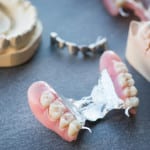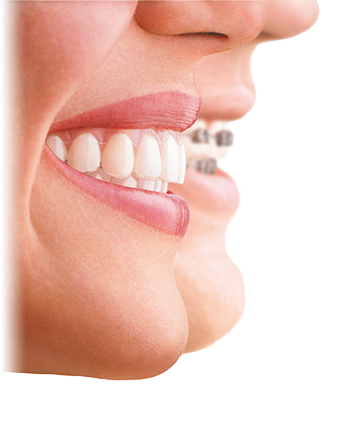 Have you got missing teeth or have you recently lost a tooth? We understand that losing a tooth can be distressing, and we have a range of treatments ready and waiting to restore your smile and your confidence. Here are our incredible tooth replacement options:
Have you got missing teeth or have you recently lost a tooth? We understand that losing a tooth can be distressing, and we have a range of treatments ready and waiting to restore your smile and your confidence. Here are our incredible tooth replacement options:
Dental Bridges
Dental bridges are commonly used to replace individual missing teeth, but they can also be used to restore the smile when multiple teeth have been lost. The most common type of bridge is a traditional fixed bridge, which comprises a false tooth, which is fused to a crown on either side. The bridge is custom-designed to fit the gap perfectly, and you can choose from materials, including porcelain, for an incredibly natural aesthetic. We can fit bridges in just two appointments, which are usually held around 2 weeks apart. Bridges are more affordable than implants, but they don’t last as long. Having said that, if you care for your bridge well, you should find that it lasts around 10-15 years.
Dentures
Dentures are a tried and tested tooth replacement method. They enable you to carry out all the functions you take for granted when you have a set of healthy natural teeth, and they come in partial and full sets. Dentures are bespoke, as every patient is individual, and modern versions are very natural looking and comfortable. Dentures are not a permanent solution, but they can be made quickly, and they enable you to eat, smile and talk with confidence.
Dental Implants
Dental implants are the newest kid on the block when it comes to tooth replacement methods. Implants are usually made from titanium, and they replace the root section of your natural tooth. The implant integrates into the jaw bone in the same way as the root, enabling it to offer the same level of stability and anchorage. Once the implant has settled, it can then be attached to a denture, a bridge or a crown. As it is compatible with a diverse range of restorations, the implant is the most versatile option and it can benefit patients with any number of missing teeth.
To find out more and compare treatment options, call us today and book a consultation.










 What are dental implants?
What are dental implants? One of the main problems patients have experienced with dental replacements over the years is that they never quite look or feel like real teeth. Dental bridges and partial dentures serve a purpose in restoring to some degree the appearance of missing teeth and enable the patient to eat slightly easier, whilst protecting the position of the remaining teeth. But they never quite feel natural. This is mostly because they only replace the part of the tooth visible above the gum. A real tooth has a root that is anchored deep into the bone and gum tissue of the face. This is what makes a tooth sturdy and gives it its strength.
One of the main problems patients have experienced with dental replacements over the years is that they never quite look or feel like real teeth. Dental bridges and partial dentures serve a purpose in restoring to some degree the appearance of missing teeth and enable the patient to eat slightly easier, whilst protecting the position of the remaining teeth. But they never quite feel natural. This is mostly because they only replace the part of the tooth visible above the gum. A real tooth has a root that is anchored deep into the bone and gum tissue of the face. This is what makes a tooth sturdy and gives it its strength.

